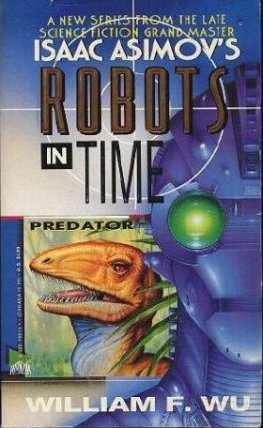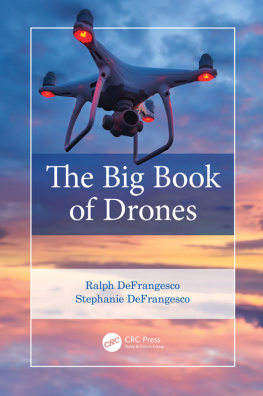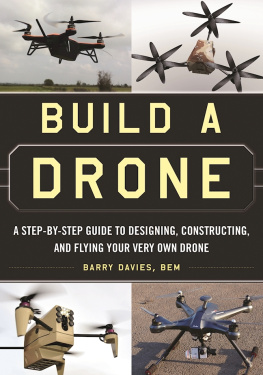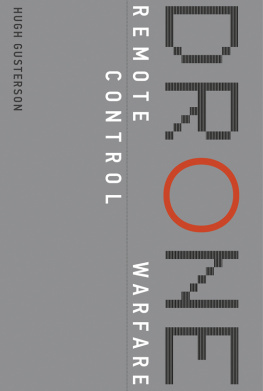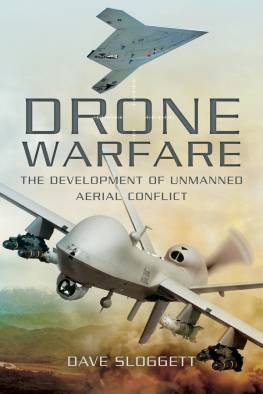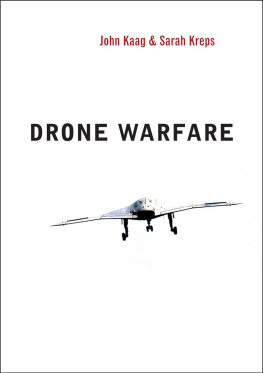Contents
Guide

The author and publisher have provided this e-book to you for your personal use only. You may not make this e-book publicly available in any way. Copyright infringement is against the law. If you believe the copy of this e-book you are reading infringes on the authors copyright, please notify the publisher at: us.macmillanusa.com/piracy.
For Faye
CONTENTS
There is, perhaps, in every thing of any consequence, a secret history which it would be amusing to know, could we have it authentically communicated.
James Boswell, The Life of Samuel Johnson, LL.D.
PROLOGUE
Late in the afternoon of Wednesday, July 12, 2000, a bus carrying about a dozen high political rollers, as thirty-six-year-old Air Force Captain Scott Swanson viewed them, pulled up at Indian Springs Air Force Auxiliary Field, a broiling desert outpost northwest of Las Vegas. The visitors included the National Security Councils deputy counterterrorism chief, a senior official from the CIAs Counterterrorist Center, officials from other intelligence and military agencies, and the director of a shadowy Air Force technology shop known as Big Safari. Indian Springs was home to the 11th and 15th Reconnaissance Squadrons, units assigned to fly a relatively new unmanned, remote-control aircraft. Though the drone was equipped with nothing deadlier than daylight and infrared video cameras, it bore a menacing name: Predator.
Swanson, a former special operations helicopter pilot, had flown Predators for the past two years, mostly in regular intelligence, surveillance, and reconnaissance missions over the Balkans. But soon he was to join Big Safari as that outfits sole Predator pilot, which was why he had received a phone call from the Pentagon a few days earlier asking him to organize a show-and-tell session for those on the bus.
Theres going to be a bunch of people in suits, Swanson was told. Can you do a briefing on Predator and show them some capabilities in flight, but keep it quiet?
On the other end of the call was Air Force Colonel James G. Clark, whose official title was technical director, simulation and integration, Office of the Assistant Vice Chief of Staff, Headquarters, U.S. Air Force. In reality, Clark worked for the services two top leaders, the four-star chief of staff and the civilian secretary of the Air Force. He was their favorite fixer, an inside operator who was canny about how to bypass bureaucracy and who relished getting things done, as he liked to put it, quick and dirty. This was partly why Clark encouraged everyone to call him by his nickname, Snakeor, if regulations required they salute him, Colonel Snake. He consciously cultivated the image of a shrewd and slippery operator who might be dangerous if stepped on, a reputation he found useful in intimidating real or potential opponents. For the past three years, the Predator had been Snake Clarks pet project, and for the past two years, Big Safaris as well.
On the phone, Clark told Swanson the suits were coming to Indian Springs to get a better understanding of what they might expect from the Predator if it were used in a rugged part of the world. Clark slithered around the obvious question of what precise mission the government had in mind, but Swanson got the message. He read daily intelligence briefs and worked with intelligence officers, and he could guess which rugged part of the world, and even which country, was of such keen interest to these particular visitors.
From their air-conditioned bus, the delegation climbed down into the shimmering desert heat at Indian Springs and filtered into an air-conditioned briefing room, where Swanson gave them a PowerPoint presentation on the Predator and what it could do. Introduced six years earlier under a new type of rapid Pentagon procurement program, the Predator was the militarys first Medium Altitude Endurance Unmanned Aerial Vehiclea drone that could linger in the air well beyond twenty-four hours, pointing cameras at the earth and transmitting live video images back to its operators. The little aircraft owed its phenomenal endurance to its unique configuration, a design informed by its inventors childhood hobby. The Predator had thin, tapered wings stretching forty-nine feet from tip to tip and a slender fuselage just under half that long, eight feet shorter than a Piper Cubs. Fashioned from lightweight composite materials, the fuselage was flat on the bottom, rounded on top, and bulged into a dome at the nose. With its flimsy wings and skin, the craft resembled a weekend hobbyists glider and couldnt fly much faster. Powered by a four-cylinder engine akin to those used on snowmobiles, the small propeller on the planes tail could push it through the air at a sluggish top speed of just over eighty miles an hour.
Another reason the Predator could stay airborne for so long was that there was no pilot inside. Instead of a cockpit, the dome at the aircrafts nose housed a satellite dish; its two-member flight crew remained on the ground. Seated before an array of computers and color video screens in a metal box resembling a freight container, they flew the drone by remote control, using a satellite data link. As they did, one of the two crew members, designated the sensor operator, aimed and manipulated a turret under the Predators chin that held two video camerasone to shoot color images in daylight, the other able to produce infrared images by detecting variations in temperature, whether by day or by night.
As Swanson briefed them on the basics, his visitors interrupted with questions. Some wanted to know specifics about the Predators speed, range, and endurance. Some wanted to know if the video from the Predators cameras was sharp enough to identify an individual, and from what altitudes. Some wanted to know whether people on the ground could see the Predator or hear its engine. The visitors also wanted to know what tactics he would use to find a specific person and how hard that might be to do.
Swansons responses almost all began with It depends. But in order to better answer some of their questions, he invited his guests to follow him back out into the heat and down the Indian Springs flight line, where they could examine one of the faux freight containers the Air Force used to fly its small fleet of Predators.
To tour the twenty-four-foot-long, eight-foot-wide, eight-foot-tall ground control station, known to insiders as a GCS, the members of the party had to take turns, entering two at a time. Before taking anyone inside, Swanson suggested that while his visitors waited, they might try to spot or hear a Predator; one was orbiting a mile or two from the airfield, he assured them, launched a bit earlier by a crew inside the GCS. The sky was clear and it was quiet around the desert airfield, but no one would detect the drone.
Two by two, Swansons guests entered the GCS through one of two large, meat-locker-style doors on one side of the container that were opened by swinging a big lever handle. It was chilly inside the dark compartment, where constant air-conditioning was necessary to keep the electronic equipment from overheating. Even in the desert, some of the Air Force people working in the GCS wore jackets.
To their right as the visitors entered was the Predators equivalent of a cockpit, a pair of identical consoles flush against the front wall, each faced by a brown, mock-leather chair for the flight crew that looked more comfortable than it was. In front of each chair was a keyboard; on a metal rack above the keyboard at each console were two nine-inch screens side by side that displayed data about the aircraft. Above the nine-inch screens were two nineteen-inch monitors for each console, one stacked above the other. The lower monitor normally displayed imagery, the upper one a moving map, although what they showed could be changed.



